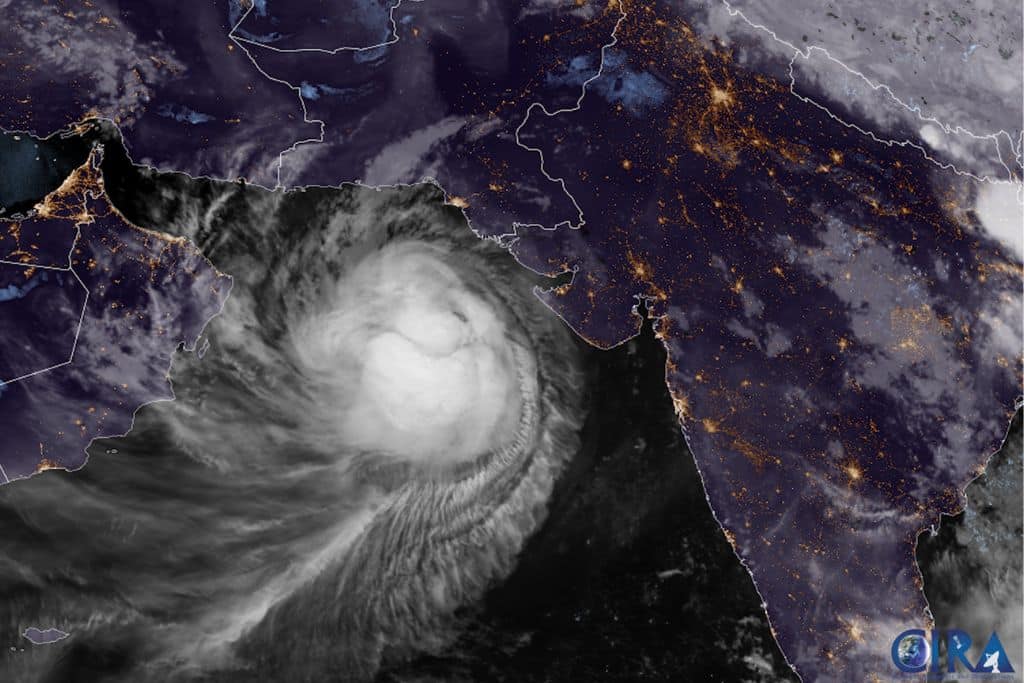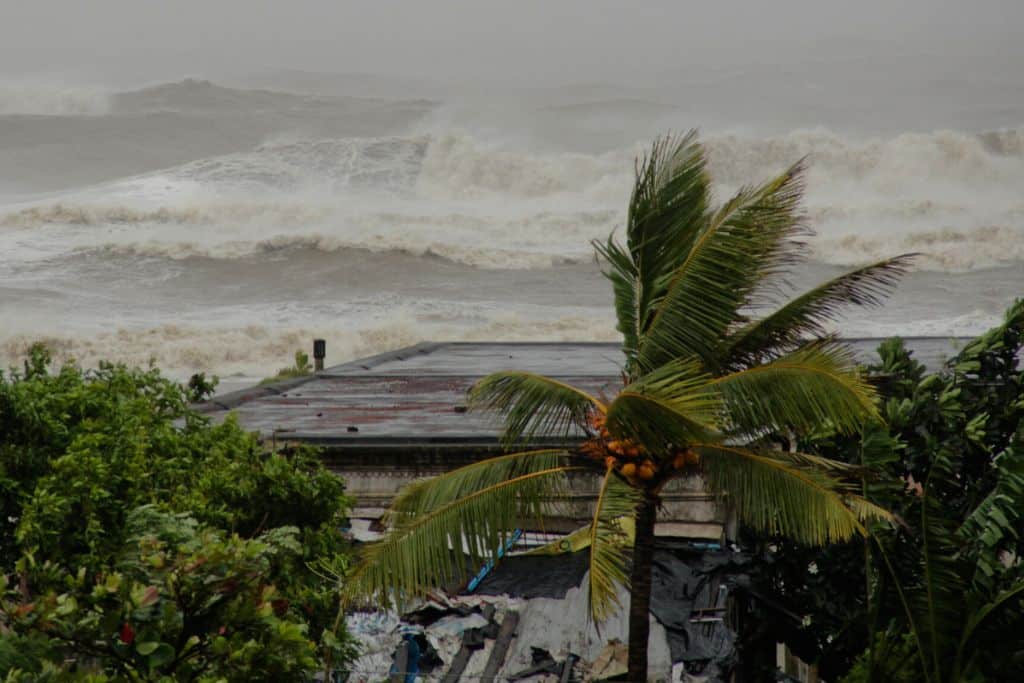‘Extremely severe’ Cyclone Biparjoy is expected to make landfall on Thursday evening between India’s Gujarat province and Karachi in southern Pakistan.
—
Seven people died on Tuesday, including four boys who drowned in rough seas off the coast of Mumbai, as India and neighbouring Pakistan begin evacuating thousands of people from coastal areas ahead of Cyclone Biparjoy.
Classified as a “very severe cyclonic storm”, Biparjoy is expected to make landfall between Mandvi in India’s western state of Gujarat and Karachi, Pakistan’s largest city, on Thursday evening, with wind maximum sustained wind speed of 125-135 km/h (78-84 mph) gusting to 150 km/h (93 mph).

Tropical Cyclone Biparjoy slowly approaches its landfall in India and Pakistan. Image: Cooperative Institute for Research in the Atmosphere at Colorado State and the National Oceanic and Atmospheric Administration (CSU/CIRA & NOAA).
Schools have been closed and trains, fishing activities, and operations at most oil rigs – including the ports of Vadinar, Sikka, Kandla, Okha, and Bedi – have been suspended in the coastal Gujarat region in western India. Authorities announced that two of the country’s largest ports – Kandla and Mundra – have also halted operations. Neighbouring Pakistan has taken similar precautionary steps, including halting fishing operations and putting hospitals on high alert. Both countries deployed hundreds of rescue teams.
Speaking at a press conference on Wednesday, Pakistan’s minister of climate change Sherry Rehman said the government has so far evacuated about 65,000 people from an area that has “barely recovered from the last climate-induced disaster.”
Indeed, Cyclone Biparjoy is the second climate-induced emergency to hit Pakistan in less than a year. Last October, the country experienced its worst and most destructive monsoon season. Describes as biblical in proportion and dubbed the “climate catastrophe of the decade”, last year’s floods left over one-third of Pakistan’s land underwater and almost 1,700 people killed. Two million homes, thousands of kilometres of roads, and hundreds of vital bridges were destroyed, leaving more than 8 million people displaced and about $30 billion in economic damages.
While donors from around the world have so far pledged more than US$9 billion to help the flood-hit nation recover, the amount is still far from the estimated $16 billion needed to reestablish vital infrastructure and systems in affected areas.
Despite contributing less than 1% of the global planet-warming greenhouse gases, its geography and lack of adequate infrastructure make the country extremely vulnerable to climate change-related disasters.
Featured image: Save the Children.
You might also like: Tropical Cyclones Are Becoming More Destructive Due to the Climate Crisis


















